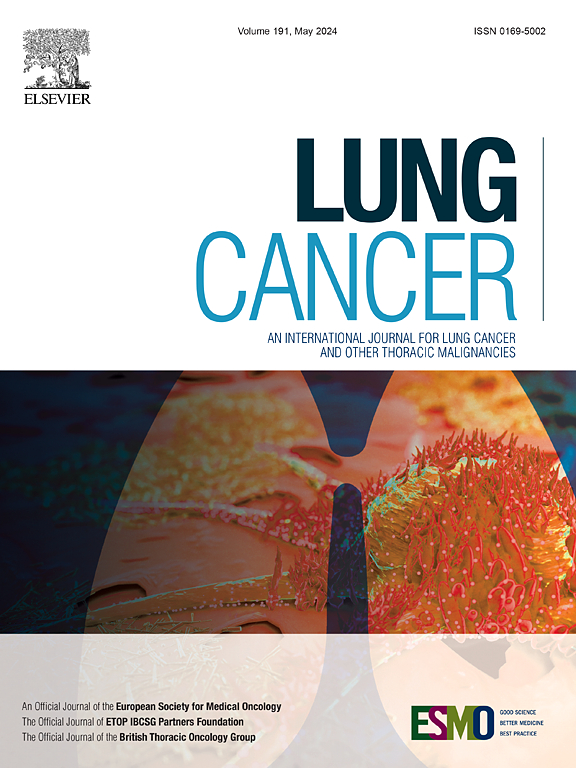Tumour spread through air spaces is a determiner for treatment of clinical stage I non-small cell lung Cancer: Thoracoscopic segmentectomy vs lobectomy
IF 4.5
2区 医学
Q1 ONCOLOGY
引用次数: 0
Abstract
Background
The choice of surgical procedure for early-stage non-small cell lung cancer (NSCLC) with tumour spread through air spaces (STAS) remain debated. This study aimed to analyse the prognostic influence of STAS on thoracoscopic segmentectomy compared to lobectomy for clinical stage I NSCLC.
Methods
This retrospective study included prospectively collected data of consecutive patients who underwent thoracoscopic segmentectomy or lobectomy for clinical stage I NSCLC from September 2020 to September 2023 at a high-volume hospital. We assessed overall survival (OS) and recurrence-free survival (RFS) using Kaplan-Meier estimator with log-rank test. LASSO-Cox and Cox regression analyses identified independent factors for survivals of STAS presence.
Results
Among the 785 patients in the study, 151 (19.2 %) had STAS-positive NSCLC. No significant difference was observed in OS and RFS between patients with the presence and absence of STAS, nor between those undergoing thoracoscopic segmentectomy and lobectomy for NSCLC in the absence of STAS. Whereas worse survivals were found in segmentectomy for patients with STAS when compared to lobectomy (3-year OS: 58.4 % vs 89.0 %, P < 0.001; 3-year RFS: 69.8 % vs 82.7 %, P < 0.001). On multivariable analysis, segmentectomy (vs. lobectomy) and increased maximum standardized uptake value in positron emission tomography were independent prognostic factors of OS (hazard ratio [HR] 5.81, P = 0.010; HR 1.12, P = 0.022) and RFS (HR 5.78, P = 0.004; HR 1.10, P = 0.025) among patients with STAS.
Conclusions
In this study, segmentectomy for clinical stage I NSCLC with STAS had inferior RFS and OS when compared to lobectomy.
求助全文
约1分钟内获得全文
求助全文
来源期刊

Lung Cancer
医学-呼吸系统
CiteScore
9.40
自引率
3.80%
发文量
407
审稿时长
25 days
期刊介绍:
Lung Cancer is an international publication covering the clinical, translational and basic science of malignancies of the lung and chest region.Original research articles, early reports, review articles, editorials and correspondence covering the prevention, epidemiology and etiology, basic biology, pathology, clinical assessment, surgery, chemotherapy, radiotherapy, combined treatment modalities, other treatment modalities and outcomes of lung cancer are welcome.
 求助内容:
求助内容: 应助结果提醒方式:
应助结果提醒方式:


